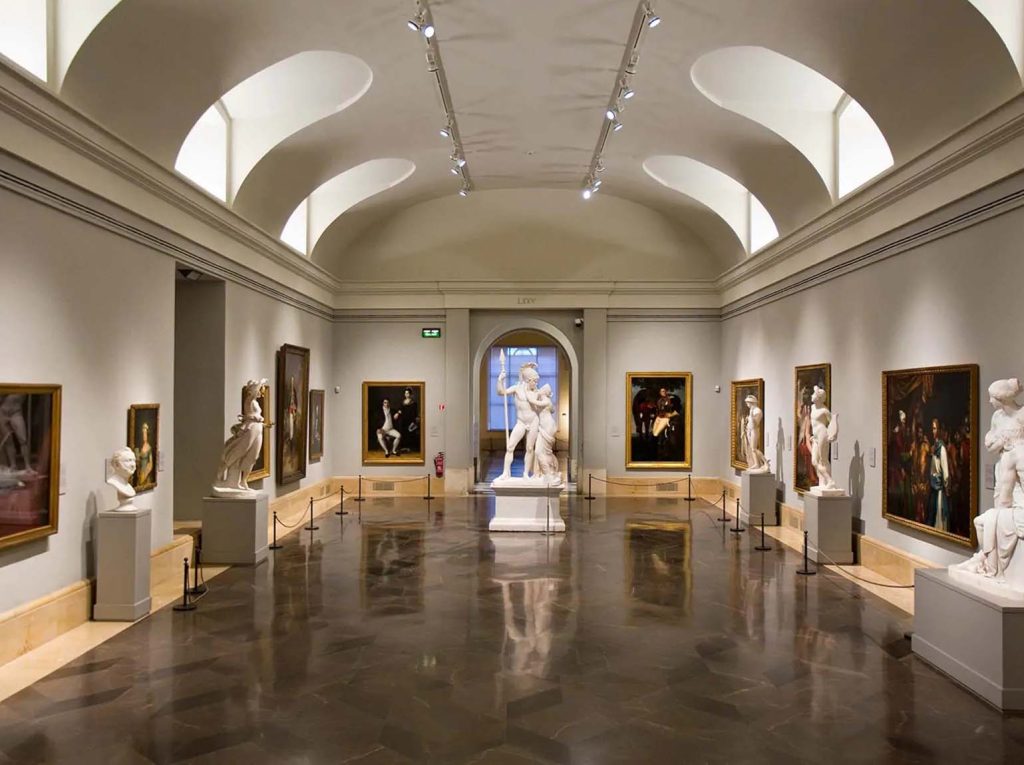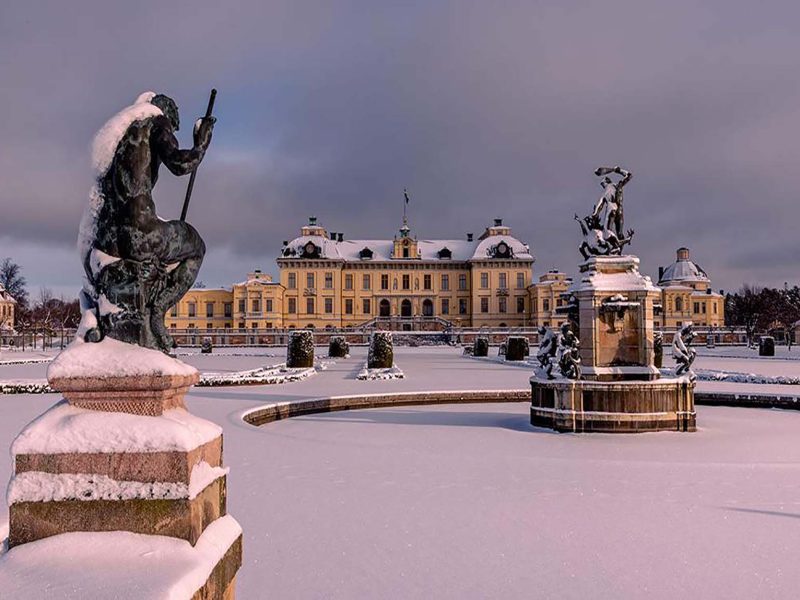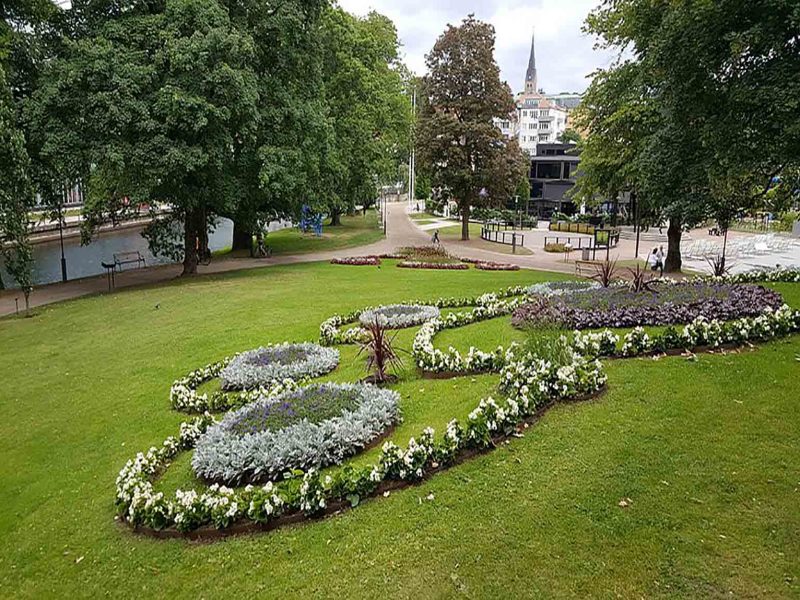This year marked a long-awaited journey for me as I ventured to the Prado Museum in Madrid. Anticipation had built within me for quite some time, fueling my eagerness to explore this renowned cultural hub. As I stepped through the museum’s entrance, it felt as though I was stepping into the very essence of Spanish artistic heritage—a treasure trove brimming with creativity and history.
Each stride I took within the Prado Museum seemed to carry the weight of centuries past, a palpable reminder of the rich tapestry of stories and emotions woven into each masterpiece adorning its halls. It was as if the walls themselves whispered tales of bygone eras, beckoning me to delve deeper into their narratives. Below I will take you to the Prado Museum in Madrid through my own personal experience and share my travel experience and tips.
Introduction to the Prado Museum

Nestled in the bustling heart of Madrid, the Prado Museum stands as an enduring symbol of Spain’s rich cultural heritage. Initially conceived as a repository for natural history specimens in the waning years of the 18th century, its destiny took a transformative turn when King Ferdinand VII decreed its conversion into an art museum in 1819. Thus began the illustrious journey of the Prado, as it embarked on a mission to showcase the eminent collection of Spanish masterpieces amassed by the royal family.
The Prado Museum’s evolution over the centuries is a testament to its unwavering commitment to the preservation and celebration of artistic excellence. What began as a modest endeavor has blossomed into a sprawling institution of global renown, attracting art enthusiasts and scholars from every corner of the world.
The museum’s architectural grandeur mirrors the magnificence of the treasures it houses. With its stately façade and regal interiors, the Prado exudes an aura of elegance and sophistication, inviting visitors to embark on a journey through the annals of Spanish art history.
As one traverses the hallowed halls of the Prado Museum, they are transported through time and space, encountering a dazzling array of artistic masterpieces that span epochs and genres. From the solemn majesty of Velázquez’s “Las Meninas” to the ethereal beauty of Goya’s “The Third of May 1808,” each artwork serves as a poignant reminder of Spain’s enduring artistic legacy.
Beyond its role as a custodian of priceless artworks, the Prado Museum also serves as a beacon of enlightenment and education. Through its diverse array of exhibitions, lectures, and educational programs, the museum endeavors to foster a deeper understanding and appreciation of Spanish art and culture among visitors of all ages and backgrounds.
Moreover, the Prado Museum’s influence extends far beyond the confines of its physical walls. Through strategic partnerships and collaborations with institutions worldwide, it actively participates in the global dialogue surrounding art and cultural heritage conservation.
In essence, the Prado Museum stands as a bastion of artistic excellence, a living testament to Spain’s cultural prowess. As it continues to evolve and adapt to the ever-changing landscape of the art world, it remains steadfast in its mission to inspire and enlighten generations to come. A visit to the Prado is not merely a journey through the annals of art history but an immersive experience that ignites the senses and nourishes the soul.
Collections and Highlights:

The Prado Museum stands as a beacon of artistic excellence, housing an unparalleled collection of over 8,000 works of art that span the rich tapestry of Spanish creativity from the 12th to the 20th centuries. Within its hallowed halls, you are treated to a mesmerizing journey through the annals of Spanish artistry, encountering masterpieces that have shaped the course of art history.
At the heart of the Prado’s collection lies a treasure trove of works by some of Spain’s most revered artists. Among these luminaries is the iconic figure of El Greco, whose ethereal paintings transport viewers to realms of divine beauty and spiritual introspection. His mastery of form and color is evident in works such as “The Annunciation,” a haunting portrayal of the sacred moment when the angel Gabriel announces the impending birth of Christ.
No discussion of the Prado would be complete without mention of Diego Velázquez, whose contributions to the canon of Western art are nothing short of legendary. His magnum opus, “Las Meninas,” stands as a testament to his unparalleled skill and artistic vision. Set within the opulent confines of the Spanish royal court, the painting captivates viewers with its enigmatic composition and masterful manipulation of light and shadow. As one gazes upon the scene, they are drawn into a world of intrigue and mystery, where reality blurs with illusion and the boundaries between artist, subject, and viewer become fluid.
Equally compelling are the works of Francisco de Goya, whose unflinching exploration of the human condition continues to resonate with audiences centuries after they were created. “The Third of May 1808” remains one of his most iconic works, a visceral depiction of the atrocities of war that transcends time and place to speak to the universal human experience of suffering and resilience.
Yet, the Prado’s collection extends far beyond the works of these titans of Spanish art. From the fantastical imaginings of Hieronymus Bosch in “The Garden of Earthly Delights” to the sensual allure of Titian’s “Danaë,” the museum offers a panoramic view of the diverse currents and influences that have shaped Spanish art over the centuries.The artistic legacy of Francisco de Goya stands as a testament to his unparalleled ability to probe the depths of the human psyche and illuminate the complexities of the human condition. Through his powerful and evocative works, Goya captured the essence of the tumultuous era in which he lived, leaving an indelible mark on the annals of art history.
One of Goya’s most iconic and haunting creations is “The Third of May 1808,” a masterpiece that continues to resonate with audiences across the ages. Painted in the aftermath of the Spanish War of Independence, the work serves as a searing indictment of the brutality and inhumanity of war. Set against the backdrop of a moonlit night, the painting depicts the execution of Spanish civilians by French soldiers—a harrowing scene that evokes a profound sense of anguish and despair. Central to the composition is the figure of a lone Spaniard, his arms outstretched in a gesture of defiance and resignation. Bathed in the harsh glare of the soldiers’ torches, his face is a study in anguish and defiance, a poignant reminder of the indomitable spirit of resistance in the face of oppression. Behind him, a group of anonymous victims lies sprawled on the ground, their lifeless forms serving as a stark testament to the brutality of war.
What sets “The Third of May 1808” apart from other depictions of conflict is its unflinching honesty and raw emotional intensity. Goya eschews heroism and romanticism in favor of stark realism, inviting viewers to confront the grim realities of warfare and its toll on the human soul. In doing so, he transcends the constraints of time and place, creating a work that speaks to the universal human experience of suffering and resilience. Indeed, “The Third of May 1808” resonates with a timeless relevance that transcends the specific historical context in which it was created. Its themes of oppression, resistance, and the struggle for freedom continue to resonate with audiences around the world, serving as a potent reminder of the enduring power of art to bear witness to the darkest moments of human history.
Beyond its historical significance, “The Third of May 1808″ also holds a mirror to contemporary society, prompting viewers to reflect on the nature of violence, injustice, and the human capacity for cruelty. In an age marked by conflict and division, Goya’s masterpiece serves as a powerful call to empathy and solidarity, urging us to confront the injustices of our own time with courage and compassion.”The Third of May 1808” stands as a testament to Francisco de Goya’s genius as an artist and his unwavering commitment to truth and justice. Through this seminal work, Goya invites us to bear witness to the horrors of war and to recognize the resilience of the human spirit in the face of adversity. As we confront the challenges of our own time, may we draw inspiration from Goya’s vision of courage, compassion, and hope.
In addition to its permanent collection, the Prado Museum also hosts a rotating series of special exhibitions that offer fresh perspectives on familiar works and introduce visitors to new artists and movements. Through these exhibitions, the museum remains at the forefront of scholarly research and artistic innovation, ensuring that its offerings continue to inspire and enlighten audiences of all ages and backgrounds.A visit to the Prado is not merely a journey through the annals of art history but an immersive experience that invites visitors to engage with the profound beauty and complexity of the human spirit.
Travel Tips:
I went there during the off-season, so there weren’t too many people. For those planning a visit to the Prado Museum, it’s essential to consider the ebb and flow of tourist traffic throughout the year.To avoid disappointment and long queues, purchasing tickets in advance is highly recommended, particularly during peak seasons such as the summer months (June-August) and major holidays. During these times, the Prado Museum experiences a surge in visitors, leading to crowded galleries and extended wait times for entry. On-the-spot ticket purchases may also be limited, further exacerbating the situation.
For a more leisurely and immersive experience, I suggest planning your visit during the off-peak seasons, such as late autumn or early spring. During these quieter periods, the museum tends to be less crowded, allowing for a more intimate exploration of its collections and exhibits. With shorter lines and fewer distractions, visitors can fully immerse themselves in the beauty and significance of the artworks on display.
To ensure a seamless and stress-free visit, it’s prudent to secure your tickets in advance through the museum’s official website or authorized ticket vendors. This not only guarantees entry at your preferred time but also eliminates the need to wait in line, allowing you to make the most of your time at the Prado Museum.
To ensure a seamless and hassle-free visit to the Prado Museum, I highly recommend purchasing tickets in advance, especially during peak seasons. There are several convenient ways to purchase tickets:
Online: The museum’s official website offers online ticket sales, allowing visitors to select their desired date and time of entry, purchase tickets, and receive them via email. This option not only guarantees entry at a specific time but also allows for skip-the-line access, saving valuable time on the day of your visit.
Ticket Offices: On-site ticket offices are available at the museum entrance for those who prefer to purchase tickets in person. However, be prepared for potentially long queues, particularly during peak hours.
Ticket prices for the Prado Museum vary depending on several factors, including age, residency, and type of ticket. As of my last visit, general admission for adults was priced at €15, with discounted rates available for students, seniors, and children. Additionally, visitors under the age of 18, as well as EU citizens and residents with proof of residency, can enjoy free admission to the museum during certain hours.




